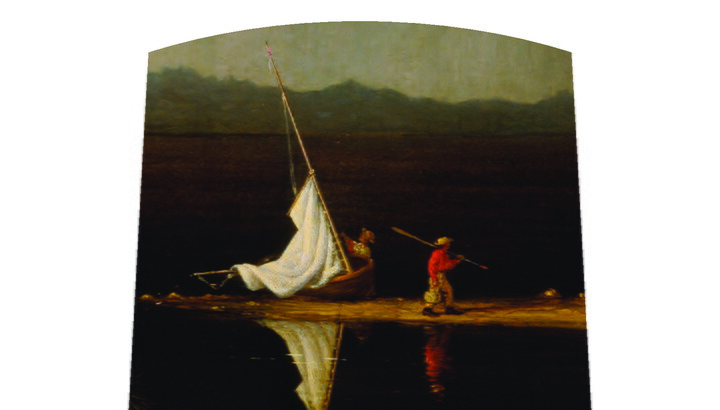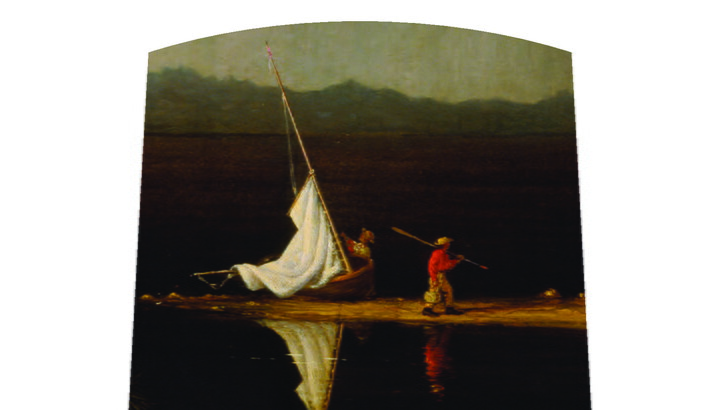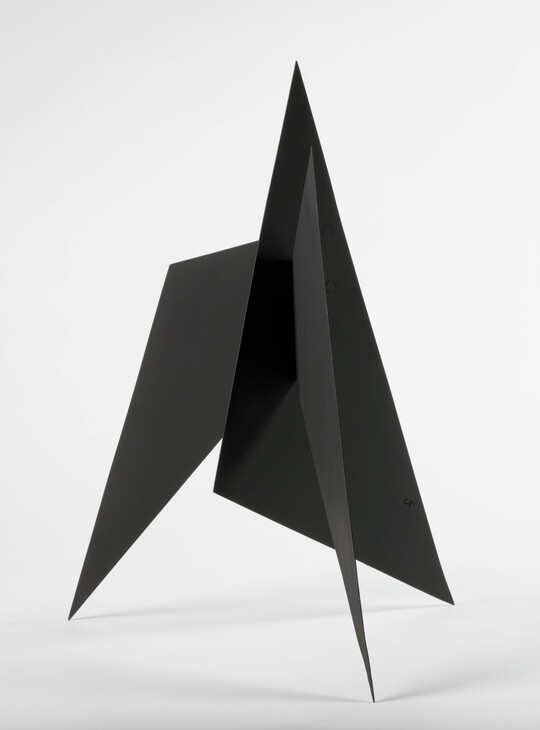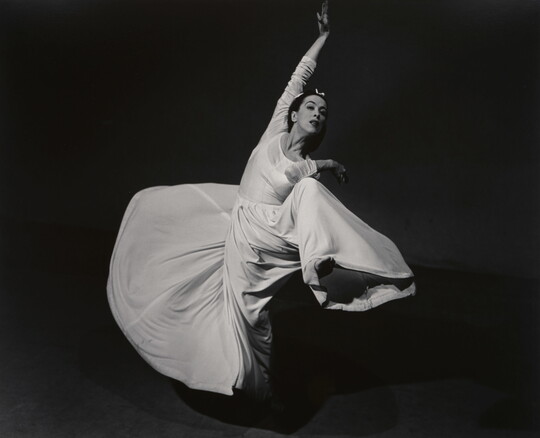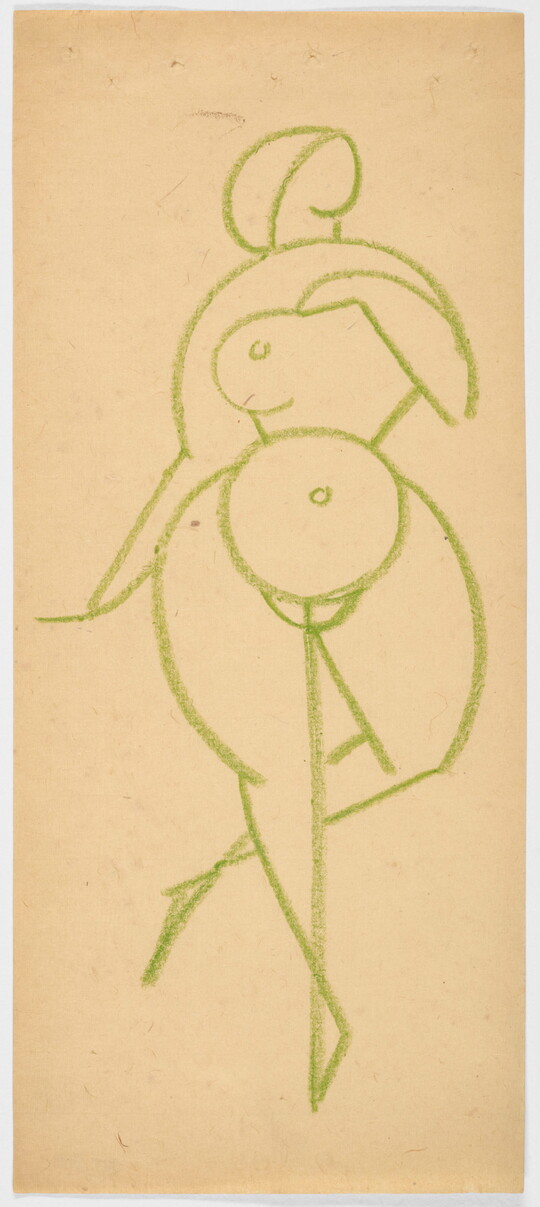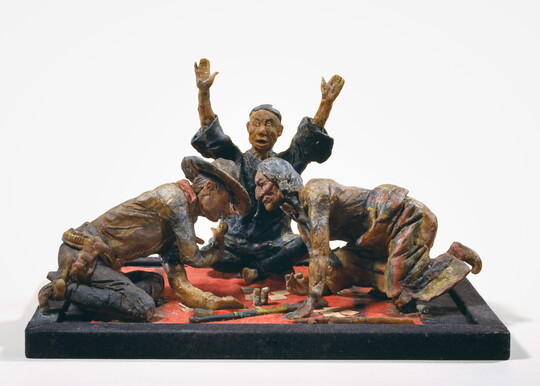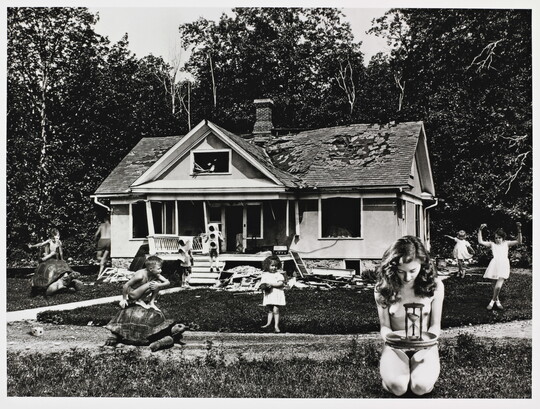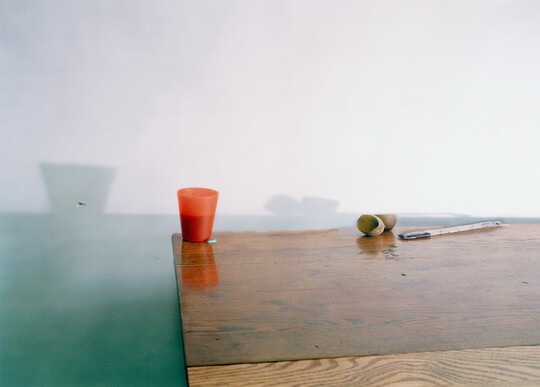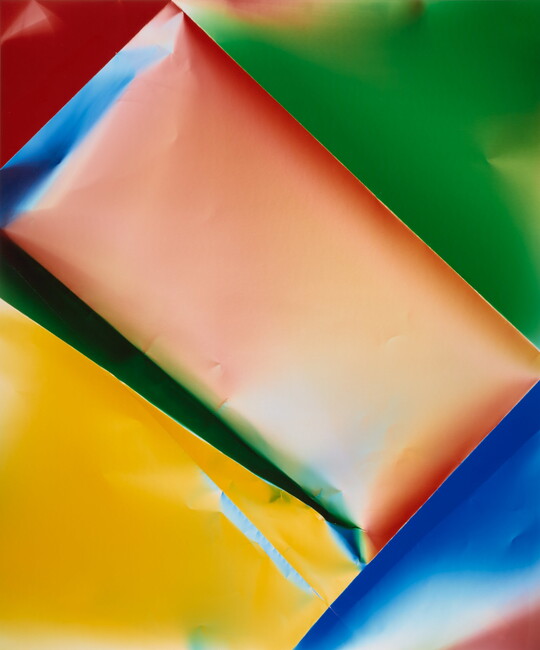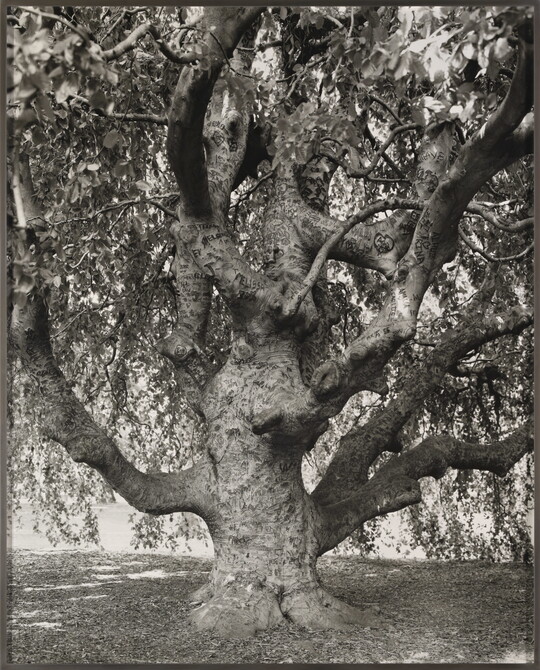


Artwork Images
Photo:
Controls
Untitled (S.453, Hanging Three-Lobed, Three-Layered Continuous Form within a Form)
Object Details
-
Date
ca. 1957-1959
-
Object Type
Sculptures
-
Medium
Iron wire
-
Dimensions
41 1/4 x 16 1/4 x 16 1/4 in.
-
Inscriptions
[none]
-
Credit Line
Amon Carter Museum of American Art, Fort Worth, Texas, Purchase with funds from the Ruth Carter Stevenson Acquisition Endowment
-
Accession Number
2019.39
-
Copyright
© 2020 The Estate of Ruth Asawa
Object Description
Asawa was born in California, but like many Japanese Americans of her era, she was sent to an internment camp by the U.S. government in 1942. Amid these unjust conditions, Asawa found a creative outlet in drawing and painting, and following her release she trained for a period to be an art teacher. In 1946 she began attending Black Mountain College, an experimental art school in North Carolina that welcomed refugees and others whose lives were disrupted by World War II.
During her time at the college, she traveled in 1947 to Toluca, Mexico, where she encountered traditional looped-wire baskets. Inspired by the complexity of the craft, she began working in wire, creating intricate, three-dimensional spheres from tight, repeated loops. These spheres are at once transparent and enclose space, making their relationship to their surroundings and viewers an essential part of the piece. With this work and others like it, Asawa redefined sculpture’s potential and meaning in the mid-20th century.
—Text taken from the Carter Handbook (2023)
Additional details
Location: Off view
See more by Ruth Asawa
Tags
-
In what ways have artistic traditions, cultural values, and social issues influenced and/or given rise to new traditions/artistic expressions?
Why do artists choose particular tools, techniques, and materials to express their ideas?
How might a work of art reflect an artist’s or a community’s lived experiences?
-
Take a moment to observe this artwork. What are some things you notice about it? How is it different from other artworks you’ve seen in the past? How is it similar?
How would you describe this sculpture?
Notice its form. In relation to art, the term “form” has two meanings: It can refer to the overall physical nature, or to the element of art concerned with three-dimensional shape. What types of forms are created? Do they remind you of anything you have seen before? There is a sense of motion and unfolding time in her pieces as if oil was dropping into water, penetrating the water but also creating spherical forms.
What might have inspired this artist? (Plants, the spiral shells of a snail, light through insect wings, and sunlight through droplets of water.)
What do you notice happening in or around the sculpture? Direct students to the use of negative space, transparency, suspension, layers, and shapes within shapes.
What is negative space? How does Asawa use negative space in this sculpture? Asawa’s work is dependent on space; it relies on the gaps that are created between objects. Her understanding of negative space as a shape led her to experiment with materials that allow for space.
What material has Asawa used to create her sculpture? What does this material remind you of?
Historians have linked Asawa’s use of wire to her experience in internment camps in Arkansas and California. After the bombing of Pearl Harbor, there was a hysteria and fear that Japanese Americans were a danger to national security. Asawa was one of more than 100,000 people of Japanese descent who were forcibly removed from their homes and jobs and imprisoned in internment camps.
Asawa adapted methods she learned while teaching art in Mexico, where people make wire baskets for domestic use. She used similar techniques to create the looped wire sculptures she became known for.
How do history and lived experiences influence an artist’s work? Art history explains the work of artists belonging to marginalized communities through the lens of their identity and lived experiences. By doing this, histories of trauma are directly connected to these artists' practices. What are the consequences of that practice?
-
Grades 3–5
In small groups, students will create a list of words that describe the sculpture. For an added challenge, students can work together to categorize their words into two lists: a list of conceptual/abstract adjectives (symbolic, personal associations), and a list of concrete adjectives (physical, tangible, visual qualities). Then, students will choose words from their list to inspire their creation of a wire sculpture.
All Levels
Students will practice bending or twisting wire to create different shapes. Then they can connect the shapes together or use one continuous piece of wire, like Ruth Asawa did, to create an artwork.
Share Educator Resources
Amon Carter Disclaimer
This information is published from the Carter's collection database. Updates and additions based on research and imaging activities are ongoing. The images, titles, and inscriptions are products of their time and are presented here as documentation, not as a reflection of the Carter’s values. If you have corrections or additional information about this object please email us to help us improve our records.
Every effort has been made to accurately determine the rights status of works and their images. Please email us if you have further information on the rights status of a work contrary or in addition to the information in our records.
Related Works
-
Study for Amon Carter Museum Plaza, 1960
Alexander Calder
Painted sheet metal
1961.418
-
Martha Graham - Letter to the World (Swirl), 1940
Barbara Morgan
Gelatin silver print
P1974.21.17
-
Green Nude, ca. 1920
Gaston Lachaise
Crayon on paper
2018.4
-
The Poker Game, ca. 1893
Charles M. Russell
Wax, wood, cloth, metal, paper, and paint
1961.61
-
Not a Chinaman's Chance, ca. 1893
Charles M. Russell
Wax, wood, cloth, metal, paper, and paint
1961.62
-
The Time Game, 2011
Jane Hammond
Gelatin silver print
P2011.29
-
Untitled #52, 2002
Laura Letinsky
Dye coupler print
P2007.3
-
Zerogram, 2017
Ellen Carey
Dye coupler print
P2018.40
-
Weeping Beech, Brooklyn Botanic Garden, Brooklyn, 2011
Mitch Epstein
Gelatin silver print
P2012.13




